Choctaw Nation of Oklahoma (CNO) and NASA’s Science Activation Program, Native Earth | Native Sky at Oklahoma State University (OSU) have partnered with Boeing to send about 500 grams of heirloom seeds from the Choctaw Nation of Oklahoma to the International Space Station this November. With the initial launch attempt coming up on November 7th, the seeds will take flight into space and spend several months on the space station before being returned to CNO. Five different important seeds native to the Choctaw Nation will be sent, returned, and later planted within CNO. The seeds are Isito (Choctaw Sweet Potato Squash), Tvnishi (a spinach-like leafy green), Tobi (Smith Peas), Chukfi (Peas), and Tanchi Tohbi (Flour Corn).
25.10.2023
NASA’s SpaceX CRS-29 Mission Flies Research to the Space Station
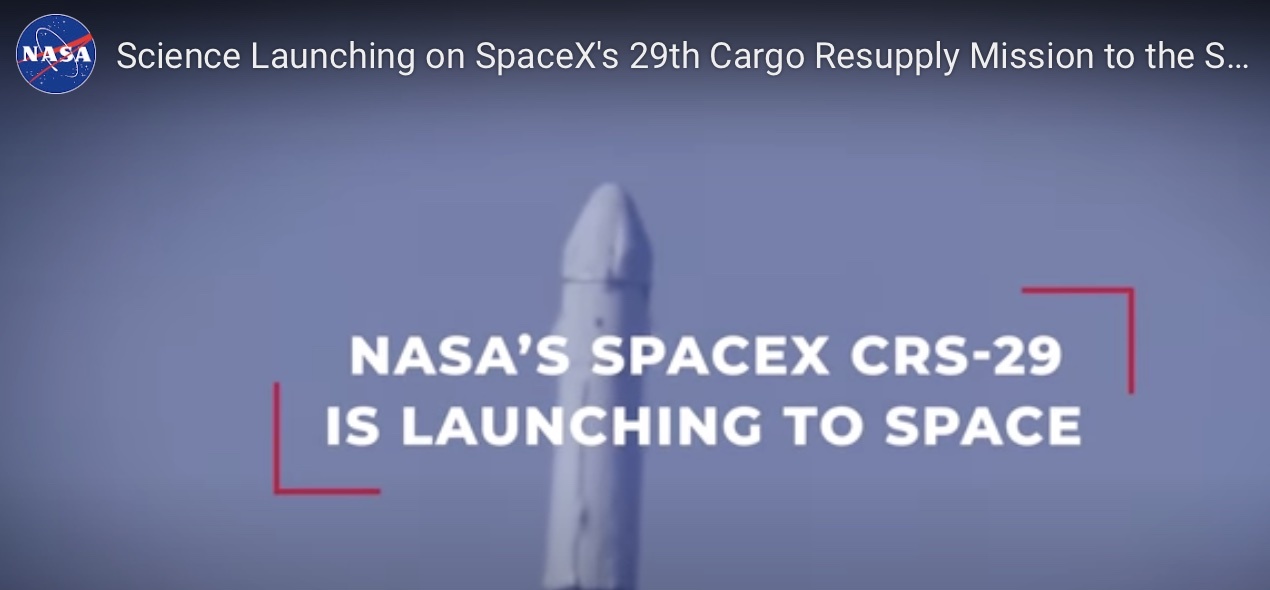
The 29th SpaceX commercial resupply services (CRS) mission for NASA carries scientific experiments and technology demonstrations, including studies of enhanced optical communications and measurement of atmospheric waves. The uncrewed SpaceX Dragon spacecraft is scheduled to launch to the International Space Station from the agency’s Kennedy Space Center in Florida no earlier than Nov. 5.
Download high-resolution photos and videos of the research mentioned in this article.
Here are details on some of the research launching to the orbiting lab:
Laser Communication from Space
NASA’s ILLUMA-T investigation tests technology to provide enhanced data communication capabilities on the space station. A terminal mounted on the station’s exterior uses laser or optical communications to send high-resolution information to the agency’s Laser Communications Relay Demonstration (LCRD) system, which is in geosynchronous orbit around Earth. LCRD then beams the data to optical ground stations in Haleakala, Hawaii, and Table Mountain, California. The system uses invisible infrared light and can send and receive information at higher data rates than traditional radio frequency systems, making it possible to send more images and videos to and from the space station in a single transmission. The ILLUMA-T demonstration also paves the way for placing laser communications terminals on spacecraft orbiting the Moon or Mars.
ILLUMA-T and LCRD create NASA’s first two-way laser communications relay system. Laser communications can supplement the radio frequency systems that most space-based missions currently use to send data to and from Earth. According to acting ILLUMA-T project manager Glenn Jackson at NASA’s Goddard Space Flight Center in Greenbelt, Maryland, laser systems are smaller, more lightweight, and use less power than radio systems. The smaller size frees up more room for science instruments, the lighter weight reduces launch costs, and lower power use results in less drain on spacecraft batteries.
Managed by NASA Goddard in partnership with NASA’s Johnson Space Center in Houston and the Massachusetts Institute of Technology Lincoln Laboratory, ILLUMA-T is funded by the Space Communications and Navigation (SCaN) program at NASA Headquarters in Washington.
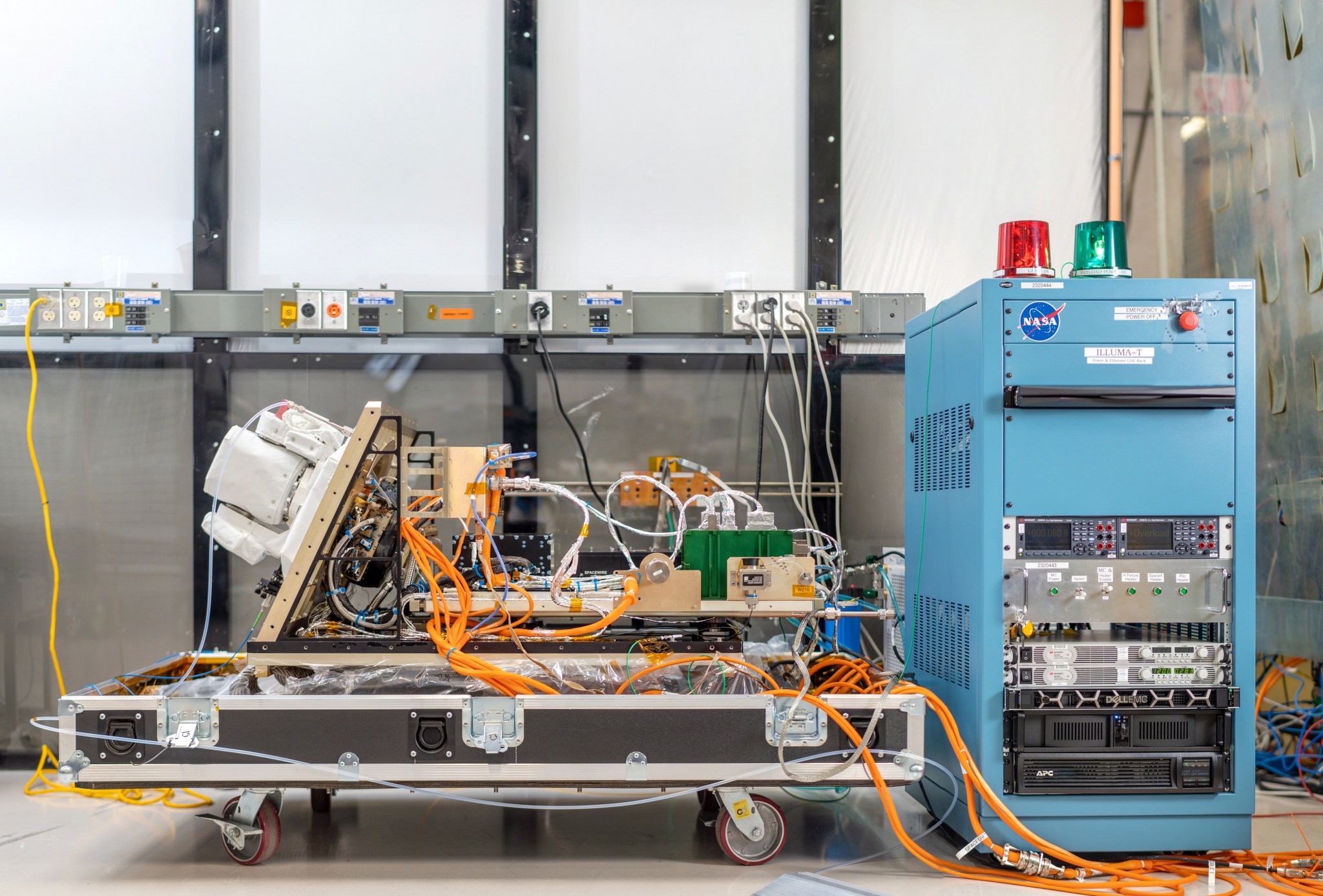
Watching Waves in the Atmosphere
NASA’s Atmospheric Waves Experiment (AWE) uses an infrared imaging instrument to measure the characteristics, distribution, and movement of atmospheric gravity waves (AGWs). These waves roll through Earth’s atmosphere when air is disturbed much like waves created by dropping a stone into water.
“Atmospheric gravity waves are one mechanism for transporting energy and momentum within the climate system and they play a role in defining the climate and its evolution,” says co-investigator Jeff Forbes of the University of Colorado Boulder. He explains that these waves are relatively small at the source but amplified at altitudes, and potentially indicate climate changes not readily observable at lower altitudes. This investigation’s long-term observations of physical processes in atmospheric circulation could increase insight into AGWs and improve understanding of Earth’s atmosphere, weather, and climate.
Researchers also are looking at how AGWs contribute to space weather, which refers to the varying conditions within the Solar System, including solar wind. Space weather affects space- and ground-based communications, navigation, and tracking systems. Scientists know little about exactly how AGWs influence space weather and this investigation could help fill in these knowledge gaps. Results could support development of ways to mitigate the effects of space weather.
The space station provides an ideal platform for the investigation given its altitude and geographic and time coverage.
“AWE is pioneering research, making the first global measurements of gravity waves at the edge of space,” Forbes says. “This is an important step forward in understanding waves in the atmosphere and their contributions to near-Earth space weather.”
The Atmospheric Waves Experiment is managed by Goddard for NASA’s Science Mission Directorate at NASA Headquarters.
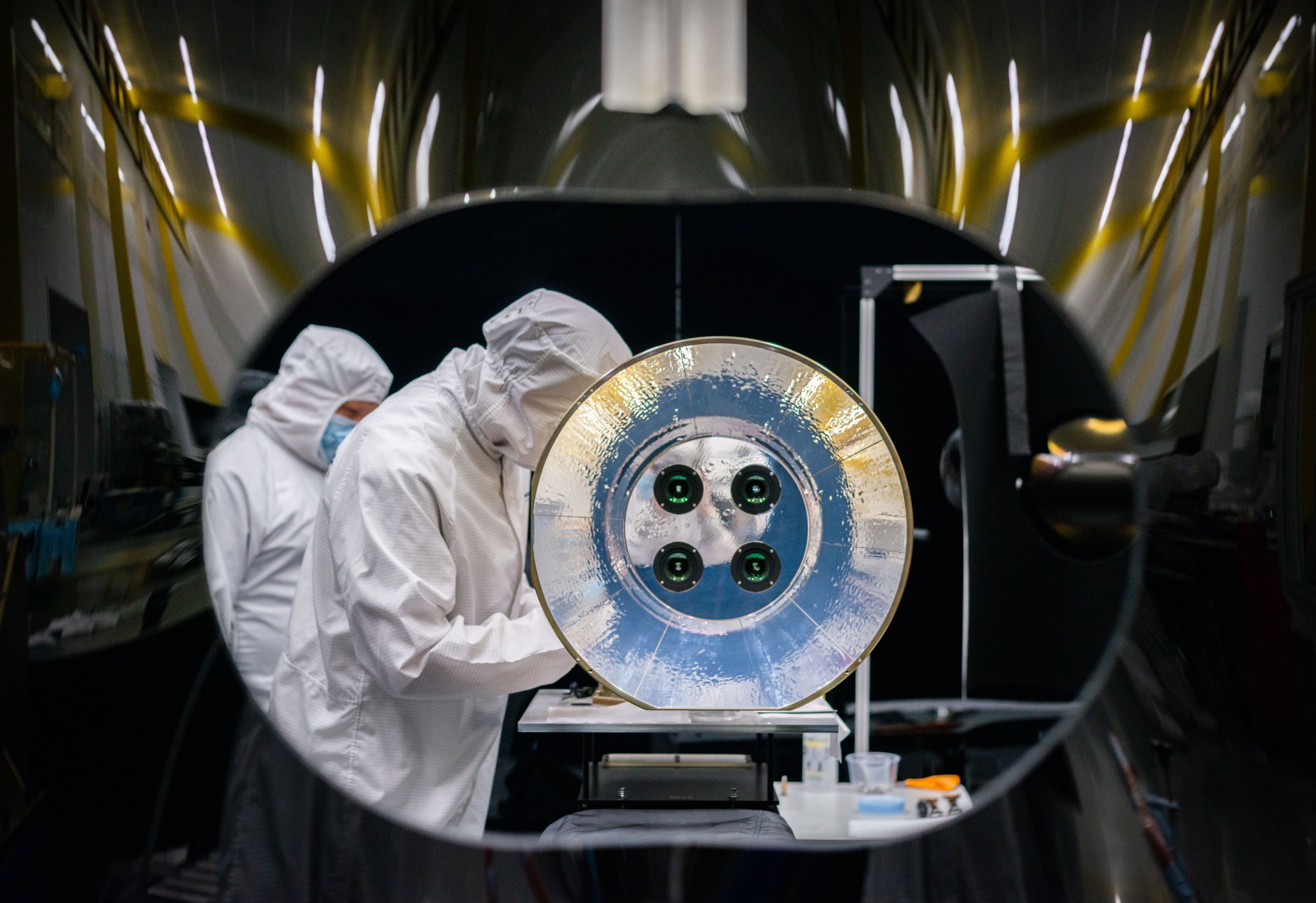
More science going to the space station
Space Flight Induced Ovarian and Estrogen Signaling Dysfunction, Adaptation, and Recoveryis a fundamental science investigation sponsored by NASA’s Biological and Physical Sciences Division. It advances previous microgravity studies that seek to better understand the combined effects of spaceflight, nutritional, and environmental stresses on control of ovulation and resulting effects on the skeleton. Results of this study could help identify and treat the effects of stress on ovulation and improve bone health on Earth.
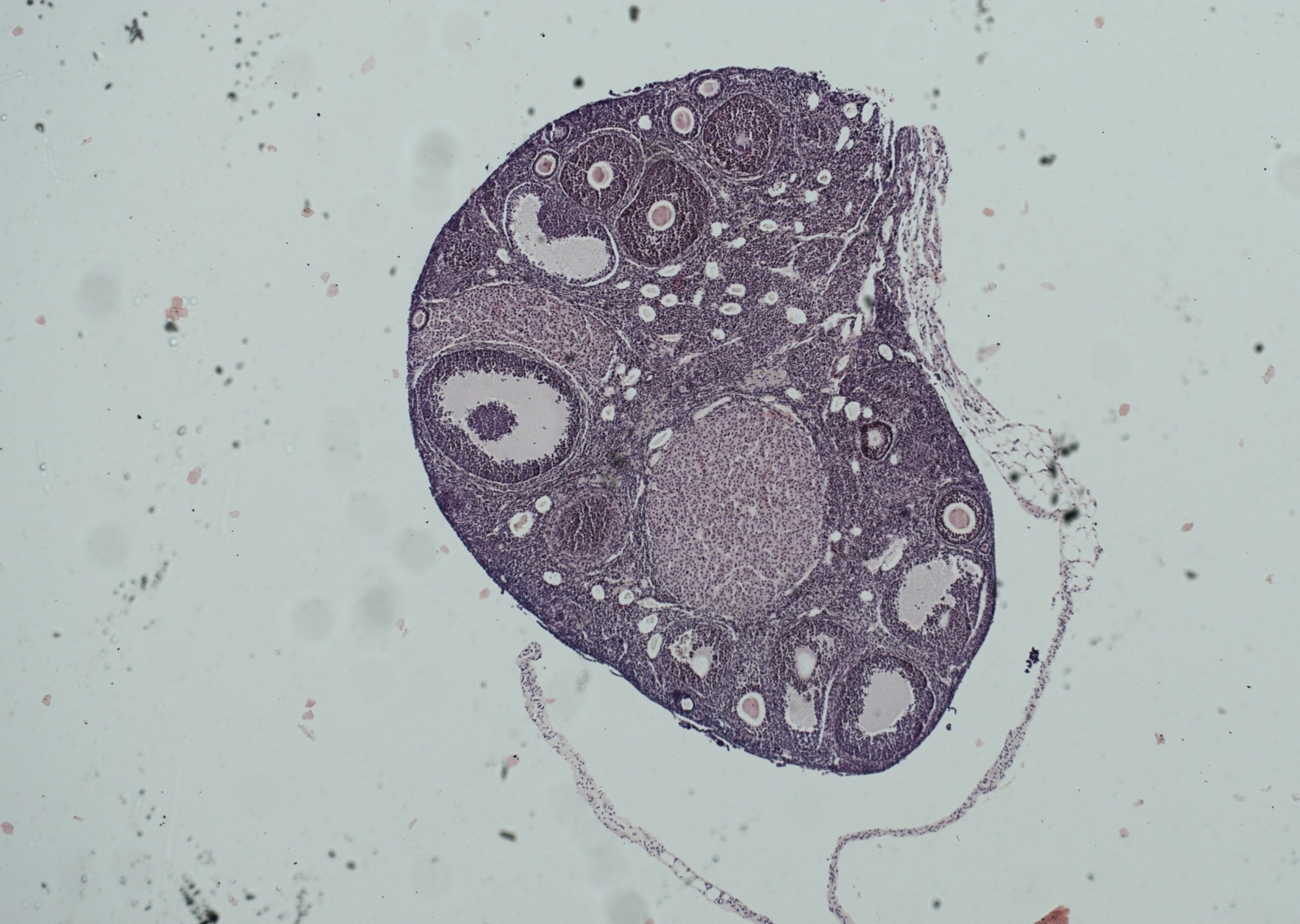
Aquamembrane-3, an investigation from ESA (European Space Agency), continues evaluation of replacing the multi-filtration beds used for water recovery on the space station with a type of membrane known as an Aquaporin Inside Membrane (AIM). These are membranes that incorporate proteins found in biological cells, known as aquaporins, to filter water faster while using less energy. Initial testing of AIM technology in 2015 showed that water filtration by membranes is possible in microgravity, and this follow-up testing could demonstrate how effectively the membranes eliminate contaminants in space station wastewater. Results could advance development of a complete and full-scale membrane-based water recovery system, improving water reclamation and reducing the amount of material that needs to be launched to the space station. This water filtration technology also could have applications in extreme environments on Earth, such as military and emergency settings, and for decentralized water systems in remote locations.
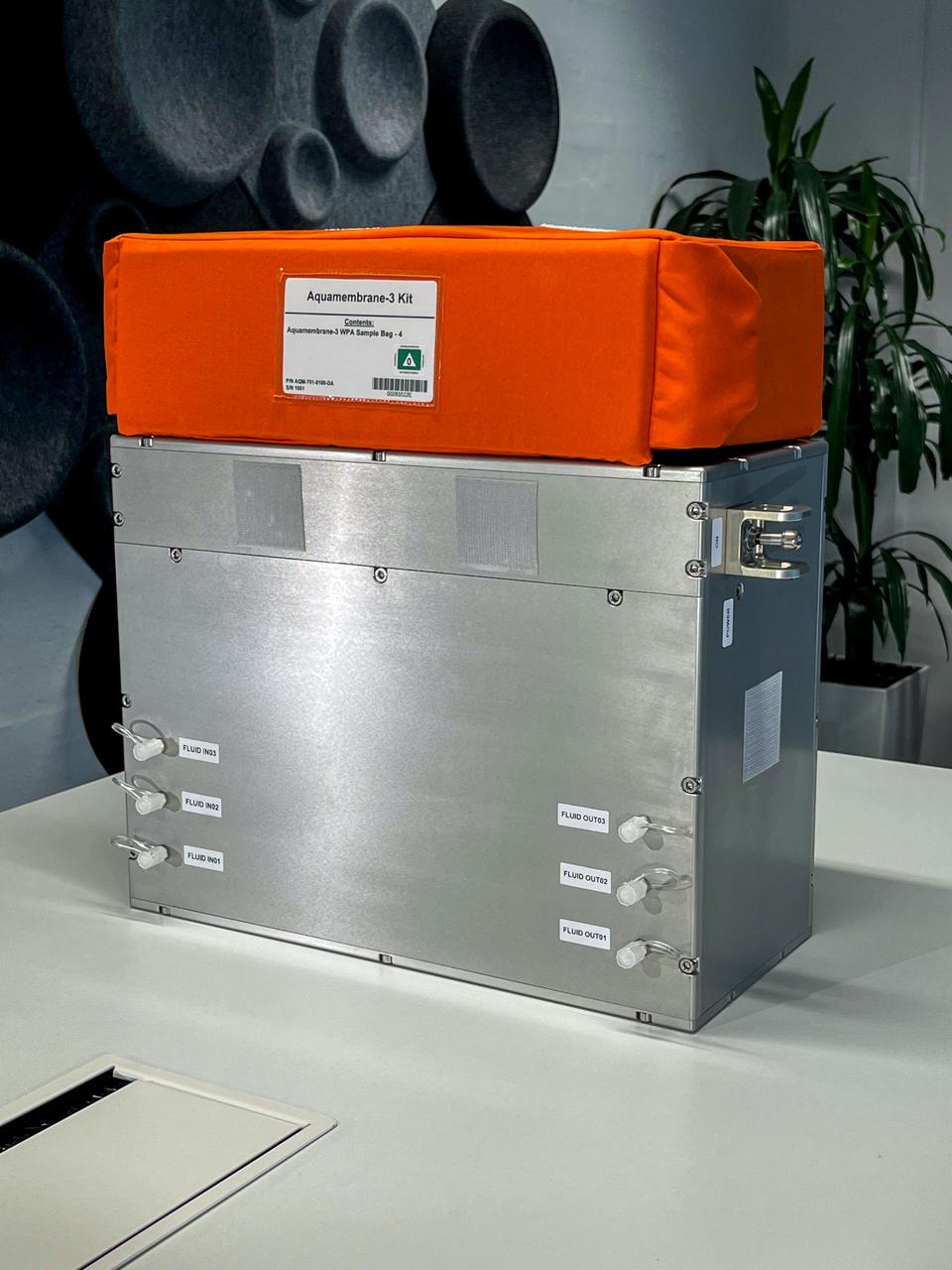
Gaucho Lung, sponsored by the ISS National Lab, studies how mucus lining the respiratory system affects delivery of drugs carried in a small amount of injected liquid, known as a liquid plug. Conducting this research in microgravity makes it possible to isolate the factors involved, including capillary or wicking forces, mucus characteristics, and gravity. Understanding the role of these factors could inform the development and optimization of targeted respiratory treatments. In addition, the work could contribute to new strategies to control contamination in tubing for liquids used in the health care and food industries.
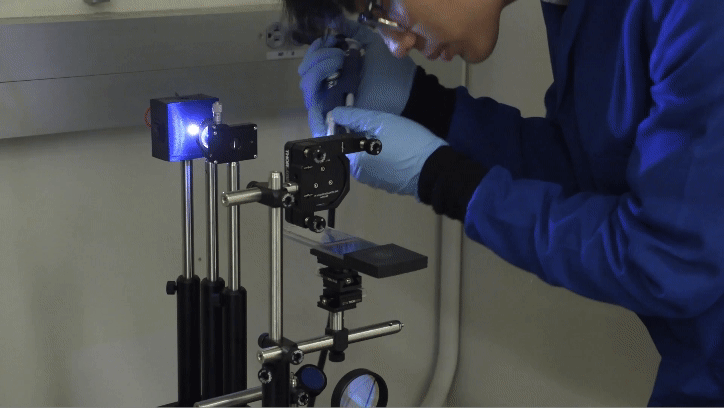
Search this database of scientific experiments to learn more about those mentioned above.
Quelle: NASA
----
Update: 2.11.2023
.
Investigation to Explore Brain Aging in Space to Fly on SpaceX CRS-29
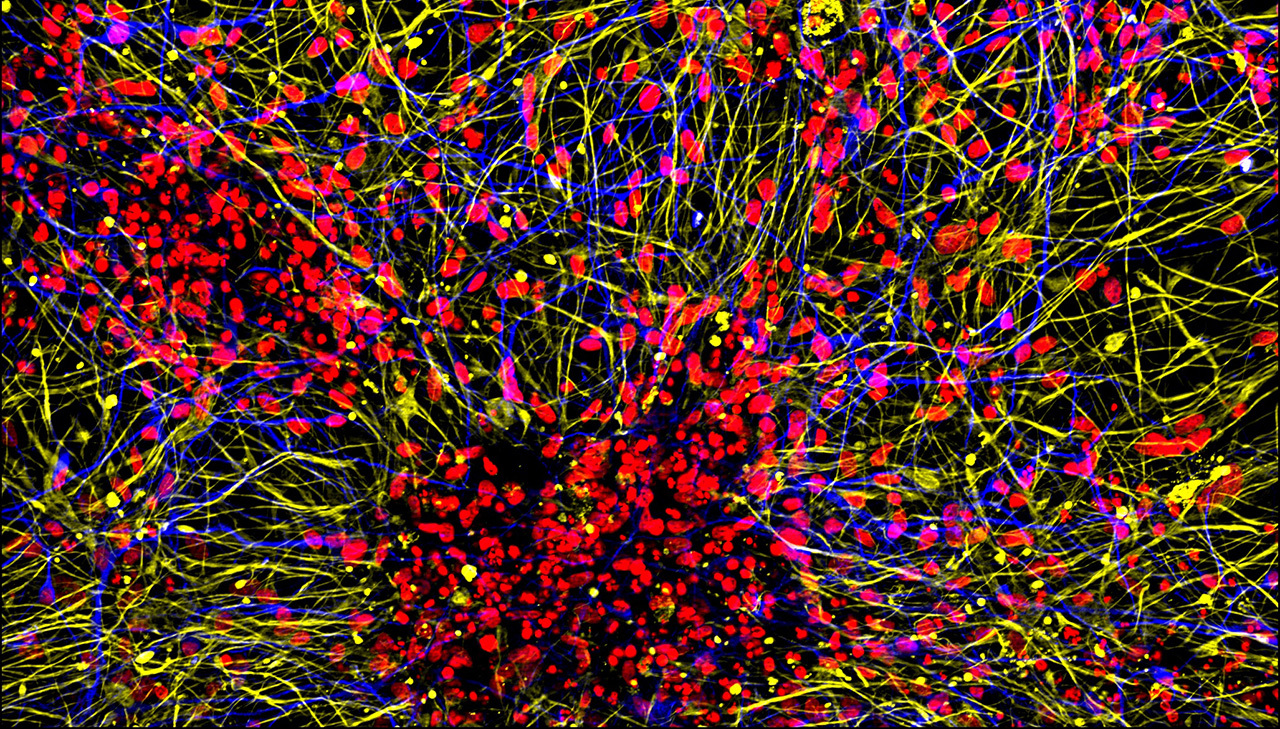
This image shows projections of neurons (yellow) and astrocytes (blue) from human brain organoids, with cell nuclei marked in red.
MEDIA CREDIT: Image courtesy of The Muotri Lab and the University of California San Diego
To unlock insights into protecting our brains from cognitive decline, a team of researchers from the University of California, San Diego is turning to the International Space Station (ISS). The team’s investigation to probe the effects of space conditions on the human brain is poised to launch to station on SpaceX’s 29th Commercial Resupply Services (CRS) mission. The ISS National Laboratory®-sponsored project will inform potential applications for treating and preventing late-onset diseases like Alzheimer’s and dementia.
The research team will leverage the unique space environment to study how microgravity, radiation, and other factors influence the brain’s aging process at the molecular level. Employing brain organoids as surrogates, these miniature, lab-grown brain models derived from human stem cells will serve as windows into the human brain’s response to space-related stressors.
Previous investigations by UC San Diego that used brain organoids onboard the ISS have hinted at accelerated molecular aging and maturation in the space environment. This newest cutting-edge experiment aims to unravel further the mysteries behind cognitive health as part of the team’s broader search for new ways to protect the brain, said project leader Alysson Muotri, director of UC San Diego’s Sanford Stem Cell Education and Integrated Space Stem Cell Orbital Research Center.
“It is hard to mimic the space environment, especially microgravity, on Earth for several days, so the ISS is the only option for our experiments,” said Muotri, a professor in the departments of pediatrics and cellular and molecular medicine at UC San Diego. “Our previous experiments suggested accelerated aging at the molecular level in microgravity. We want to understand this mechanism and provide ways to protect the human brain against cognitive decline.”
This investigation is part of an ongoing program of human biology studies from the Sanford Stem Cell Institute. The experiment is done in an automated microfluidic platform, requiring minimal astronaut time, and will run for 30 to 40 days. While the experiment is on station, the researchers will collect data about organoid growth and cell death and document changes the brain models experience in response to the space environment. Upon return to Earth, the research team will study the brain models’ cellular activities and collect gene expression data, which will help them understand how the organoids responded to spaceflight.
The findings could benefit future astronauts and inform how we protect the human brain against cognitive decline. “Understanding the impacts of space travel on the human body is a crucial need for humanity’s travel through the cosmos,” said Erik Viirre, professor of neurosciences at UC San Diego and co-investigator for the project. “What will happen to our brains, and how do we make them more resilient to microgravity exposure?”
However, Muotri said the biggest impact will be on modeling late-onset neurological conditions. Improved modeling could help lead to new treatments for dementia, Alzheimer’s, and other neurodegenerative conditions on Earth.
SpaceX CRS-29 is targeted for launch no earlier than November 5, 2023, at 10:01 p.m. EST. This mission will include multiple ISS National Lab-sponsored payloads. To learn more about the ISS National Lab-sponsored payloads research on this mission, please visit our launch page.
Quelle: ISS NATIONAL LABORATORY
----
Update: 3.11.2023
.
NASA Sets Coverage for Next SpaceX Resupply Launch to Space Station
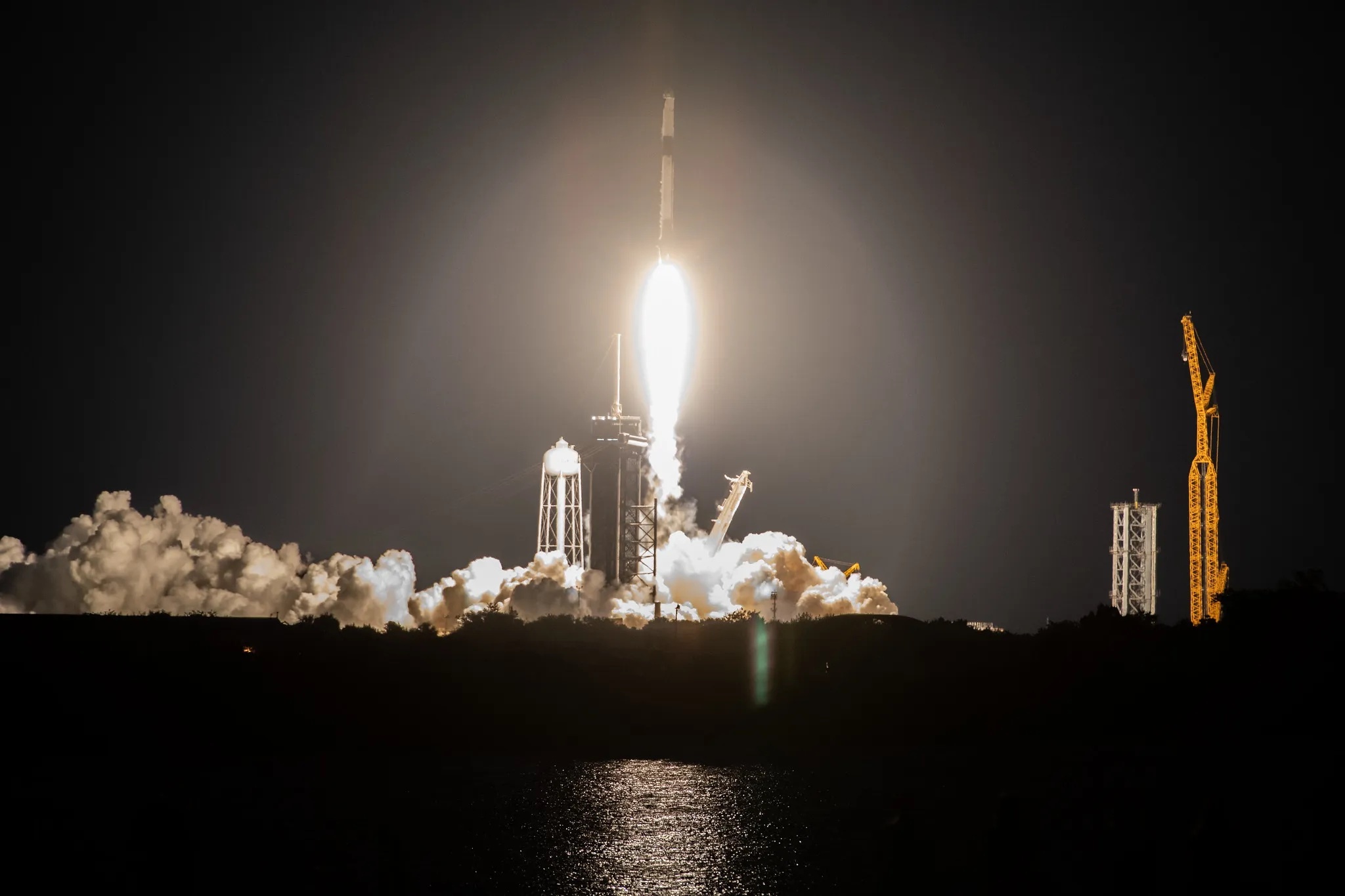
NASA and SpaceX are targeting 9:16 p.m. EST Tuesday, Nov. 7, to launch the company’s 29th commercial resupply services mission to the International Space Station from Launch Complex 39A at the agency’s Kennedy Space Center in Florida.
Live launch coverage will air on NASA Television, the NASA app, YouTube, and on the agency’s website, with prelaunch events starting Monday, Nov. 6. Learn how to stream NASA TV through a variety of platforms.
SpaceX’s Dragon spacecraft will deliver new science investigations, food, supplies, and equipment to the international crew, including NASA’s AWE (Atmospheric Waves Experiment), which studies atmospheric gravity waves to understand the flow of energy through Earth’s upper atmosphere and space.
The spacecraft also will deliver NASA’s ILLUMA-T (Integrated Laser Communications Relay Demonstration Low-Earth-Orbit User Modem and Amplifier Terminal), which aims to test high data rate laser communications from the space station to Earth via the agency’s LCRD (Laser Communications Relay Demonstration). Together, ILLUMA-T and LCRD will complete NASA’s first two-way, end-to-end laser communications relay system.
Arrival to the station is planned for 12:15 p.m., Thursday, Nov. 9. The SpaceX Dragon spacecraft will dock autonomously to the forward-facing port of the station’s Harmony module.
The spacecraft is expected to spend about a month attached to the orbital outpost before it returns to Earth with research and return cargo, splashing down off the coast of Florida.
The deadline has passed for media accreditation for in-person coverage of this launch. The agency’s media accreditation policy is available online. More information about media accreditation is available by emailing: ksc-media-accreditat@mail.nasa.gov.
Full coverage of this mission is as follows (all times Eastern and subject to change based on operations) Follow the International Space Station blog for updates.
Monday, Nov. 6
7:30 p.m. – Prelaunch media teleconference (no earlier than one hour after completion of the Launch Readiness Review) with the following participants:
- Dana Weigel, deputy program manager, International Space Station Program
- Meghan Everett, deputy chief scientist, International Space Station Program Research Office
- Sarah Walker, director, Dragon mission management, SpaceX
- Melody Lovin, launch weather officer, Cape Canaveral Space Force Station’s 45th Weather Squadron
Media may ask questions during the media teleconference by phone only. For the dial-in number and passcode, please contact the Kennedy newsroom no later than 5 p.m. EST Monday, Nov. 6, at: ksc-newsroom@mail.nasa.gov
Tuesday, Nov. 7
8:45 p.m. – NASA TV launch commentary begins
9:16 p.m. – Launch
Thursday, Nov. 9
10:30 a.m. – NASA TV coverage begins for Dragon docking to the space station
12:15 p.m. – Docking
Coverage is subject to change based on real-time operational activities. Follow the International Space Station blog for updates.
NASA Television launch coverage
Live coverage of the launch on NASA Television will begin at 8:45 p.m., Tuesday, Nov. 7. For downlink information, schedules, and links to streaming video, visit:
Audio only of the news conferences and launch coverage will be carried on the NASA “V” circuits, which may be accessed by dialing 321-867-1220, -1240, or -7135. On launch day, the full mission broadcast can be heard on -1220 and -1240, while the countdown net only can be heard on -7135 beginning approximately one hour before the mission broadcast begins.
On launch day, live coverage of the launch without NASA Television commentary will be carried on the NASA Television media channel.
NASA website launch coverage
Launch day coverage of the mission will be available on the NASA website. Coverage will include live streaming and blog updates beginning no earlier than 8:45 p.m., Tuesday, Nov. 7, as the countdown milestones occur. On-demand streaming video and photos of the launch will be available shortly after liftoff. For questions about countdown coverage, contact the NASA Kennedy newsroom at 321-867-2468. Follow countdown coverage on our launch blog for updates.
Quelle: NASA
----
Update: 5.11.2023
.
Native Earth, Native Sky CRS-29 Payload
Native Earth | Native Sky (NENS) has worked alongside the Choctaw Nation to create STEM curriculum that interweaves Choctaw culture and stories over the past year. Once the seeds have flown in space, they will return to OK and be planted by students at Jones Academy, the Choctaw Nation boarding school. The seeds’ journey to space and the students’ experiences will be documented in a NENS curriculum piece. Through NASA’s SciAct funding, NENS’s overall goal is to engage middle school students in Native Nations with science, technology, engineering, and mathematics (STEM) and to increase their overall interest in STEM braided with Native culture. OSU's 4-million-dollar cooperative agreement with NASA also includes curriculum development with the Chickasaw Nation and Cherokee Nation, which is in development now.
NENS Principal Investigator (PI) is Dr. Kathryn Gardner-Vandy. She is a citizen of Choctaw Nation of Oklahoma and an Assistant Professor of Aviation and Space at Oklahoma State University. PI Gardner-Vandy has been a driving force in partnering with CNO and Boeing to get Choctaw’s Heirloom Seeds to the space station. The entire NENS Team is looking forward to this historical launch and return of Choctaw’s Heirloom Seeds.
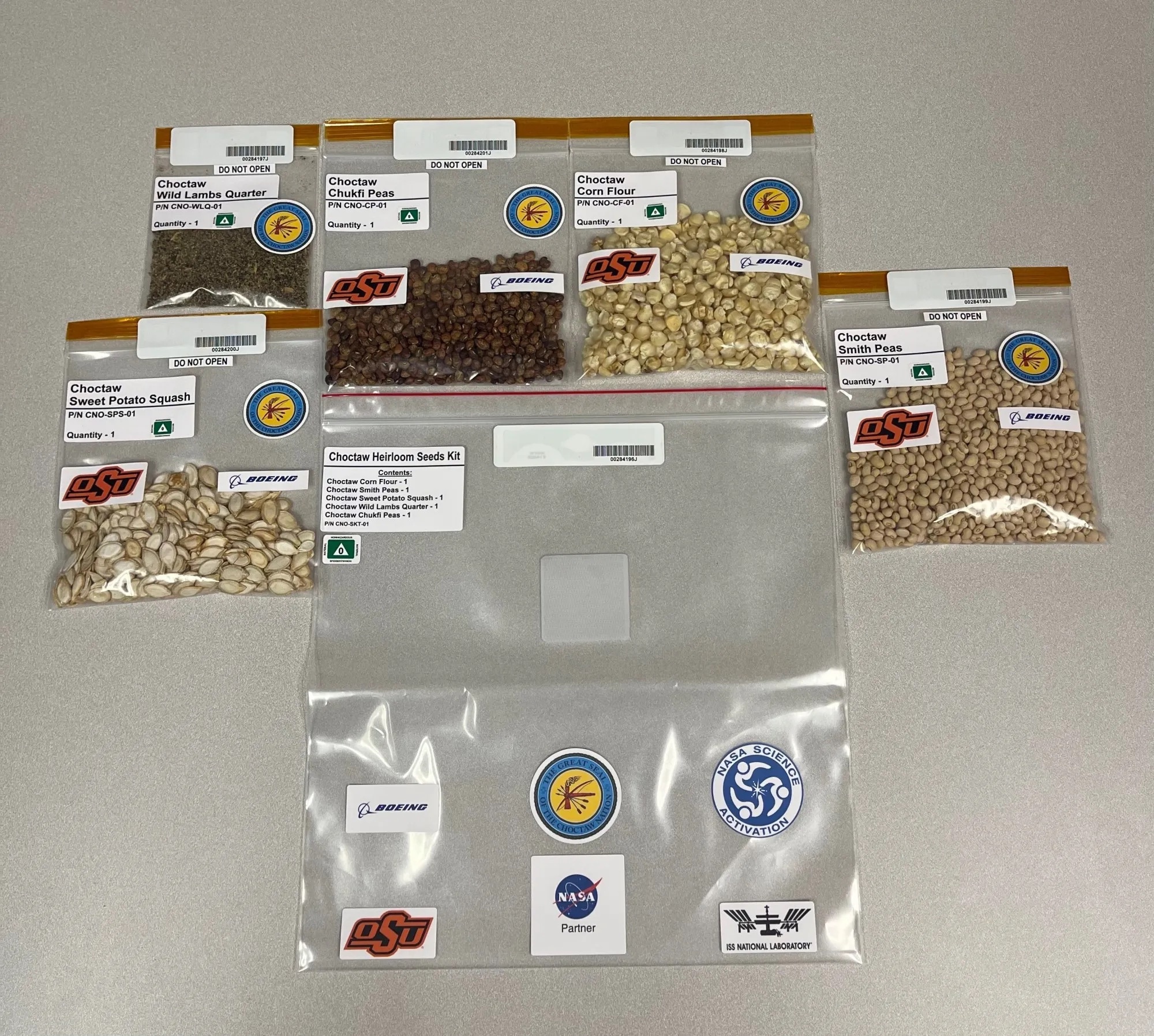
Quelle: NASA
----
Update: 10.11.2023
.
Launch tonight: SpaceX to fly NASA cargo resupply mission to International Space Station
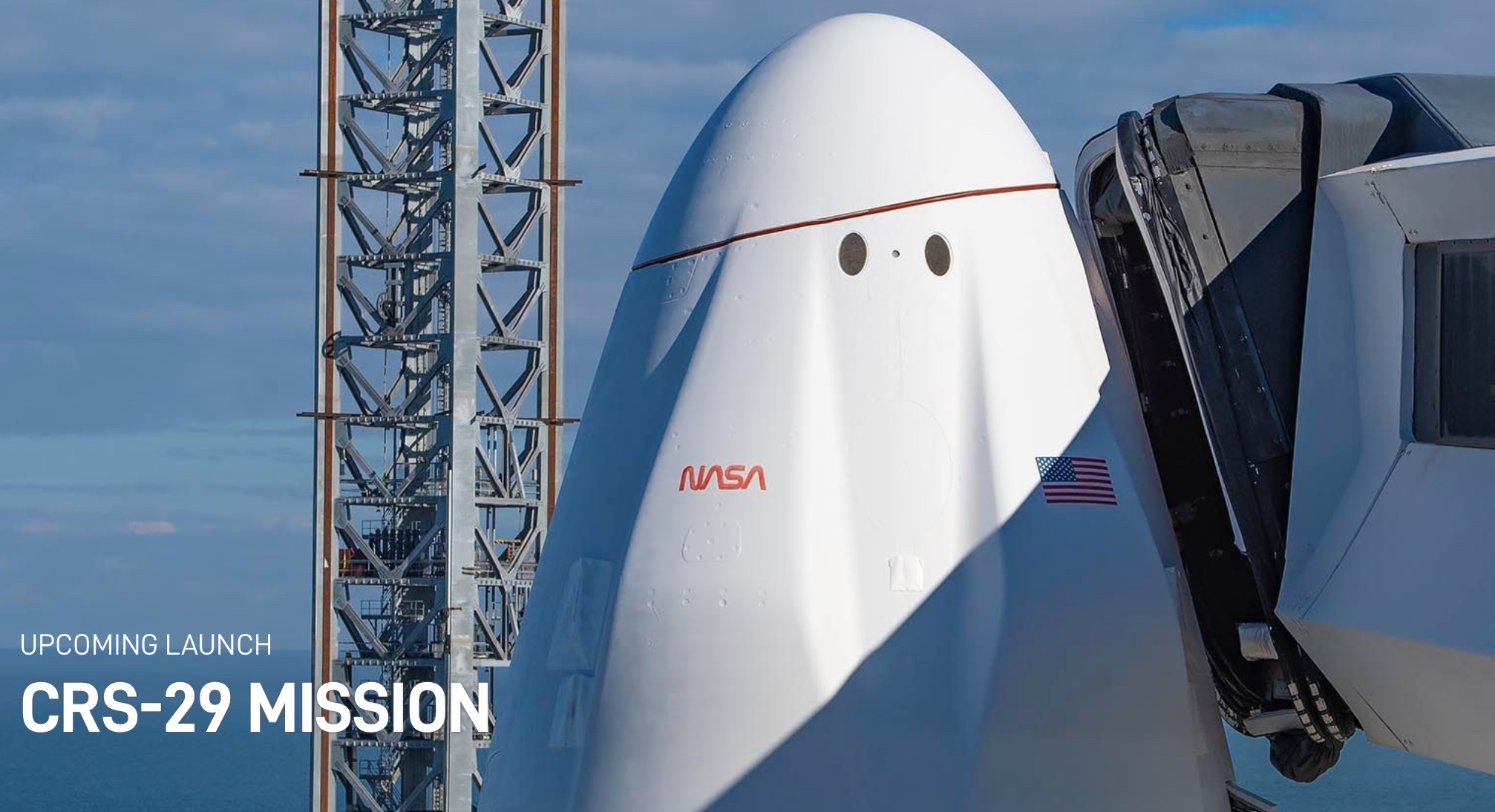
It's launch day!
SpaceX is targeting 8:28 p.m. EDT to launch a Falcon 9 rocket on NASA's 29th commercial resupply mission to the International Space Station.
The Falcon 9 will lift off from pad 39A at Kennedy Space Center. An uncrewed Dragon capsule will deliver more than 6,500 pounds of crew supplies, equipment and science experiments into low-Earth orbit to the ISS.
This CRS-29 mission will also carry a small science experiment created by the self-nicknamed "Bacteria Boys" of Pinecrest Academy Space Coast in Viera. This team of five eighth graders is sending horseshoe crab blood to the ISS to study whether it can detect E. coli bacteria in microgravity.
Teams with NASA and SpaceX completed the launch readiness review — the final major review before launch — on Wednesday afternoon.
Check back for live FLORIDA TODAY Space Team launch coverage updates on this page, starting 90 minutes before the launch window opens.
Space Force: 95% odds of 'go' weather
The Space Force 45th Weather Squadron has issued a highly favorable forecast with a 95% chance of favorable launch conditions.
Scattered cumulus and altostratus clouds should dot the sky above Cape Canaveral, with a temperature of 71.
"High resolution model guidance indicates some coastal showers may be rounding the warm waters of the Gulf Stream Thursday evening, but activity should stay low-topped and far enough away to be of any (lightning) concern," the squadron's forecast said.
"With the altostratus deck expected to be thinner and higher in the atmosphere, thick clouds are no longer a concern for the initial launch window. The weather continues to trend very favorably for an initial launch attempt," the forecast said.
This ISS resupply mission's cargo will include NASA’s Integrated Laser Communications Relay Demonstration Low Earth Orbit User Modem and Amplifier Terminal, or ILLUMA-T.
After this laser terminal is mounted on the ISS exterior, this device should relay data from the space station to Earth 10 to 100 times faster than today's radio-frequency communications systems, the Massachusetts Institute of Technology reports. The payload measures about the size of a refrigerator.
During an Oct. 26 NASA teleconference, Meg Everett, deputy program scientist for the ISS Program at Johnson Space Center, sketched a brief overview of microgravity research that will launch aboard the Dragon spacecraft. Key experiments will study:
⬤ Reproductive health in female mice.
“We will look at the function of the ovaries during flight and after flight. And we will look at some of the hormone receptors and some hormone signaling that will give us indication of the effects of microgravity on reproductive function," Everett said.
⬤ Aquamembrane-3, a water filtration system using aquaporin proteins.
“These proteins are found in every living cell membrane naturally. And they're naturally really good and strong water filters," Everett said.
"So if we are able to use this naturally occurring protein to improve our water filtration systems, both in space or even here on Earth — in remote environments or highly polluted streams, and areas like that — we can really improve our water filtration systems, reduce wastewater volumes, and also improve our recycling capabilities," she said.
⬤ Gaucho Lung, which simulates treatments for respiratory distress syndromes using gel-coated tubes filled with fluids.
“We're hoping that being able to do this work in this new microgravity environment will provide better information on how we can deliver drugs to these different disease populations and really benefit health here on Earth," Everett said.
Quelle: Florida Today
+++
Update: 10:00 MEZ
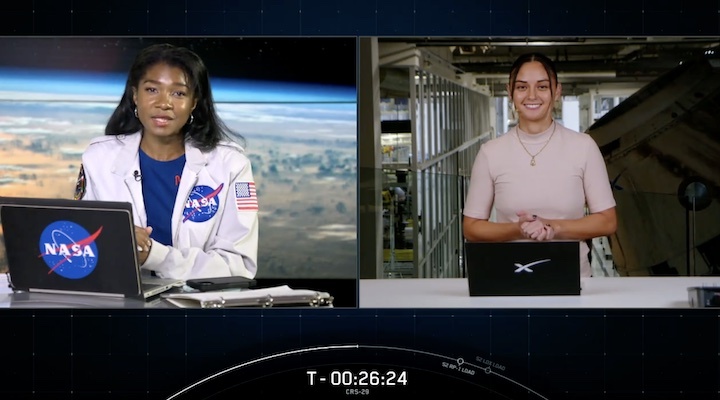
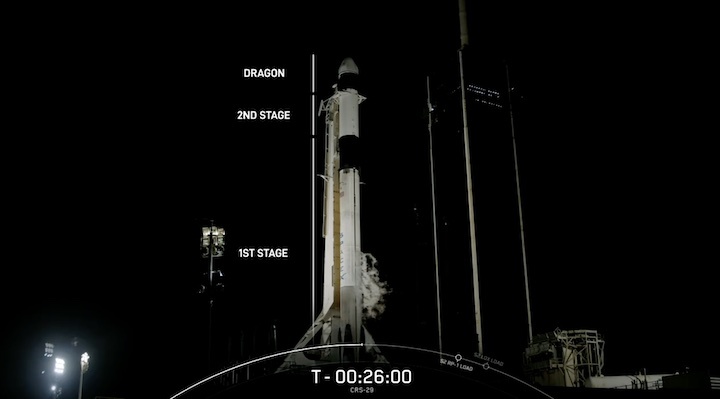
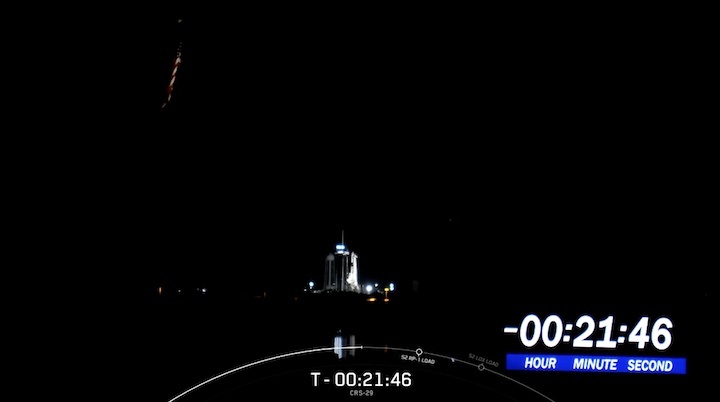
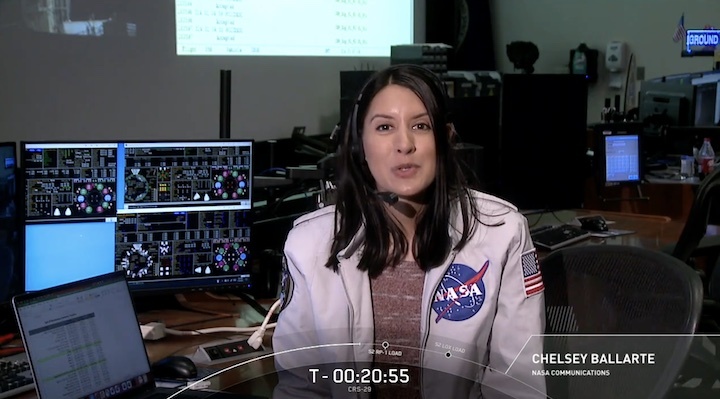
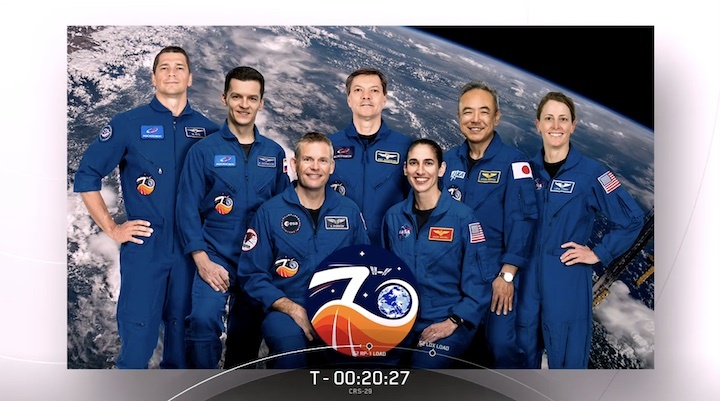
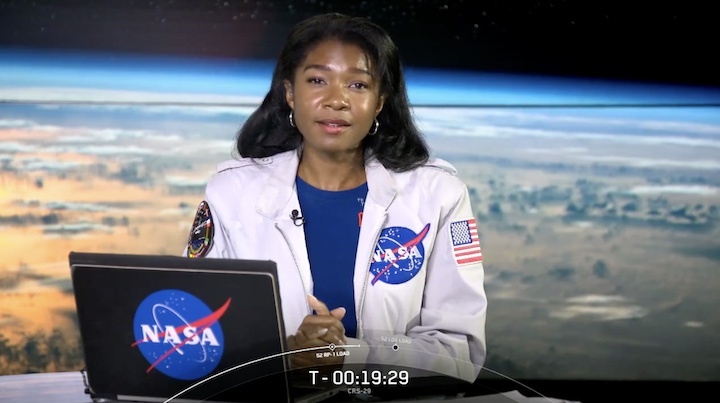
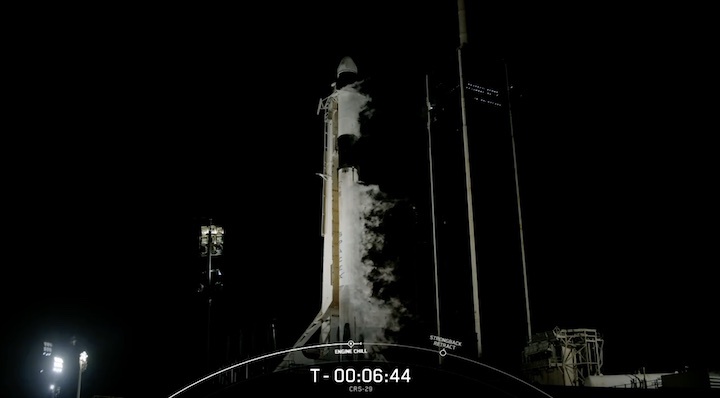
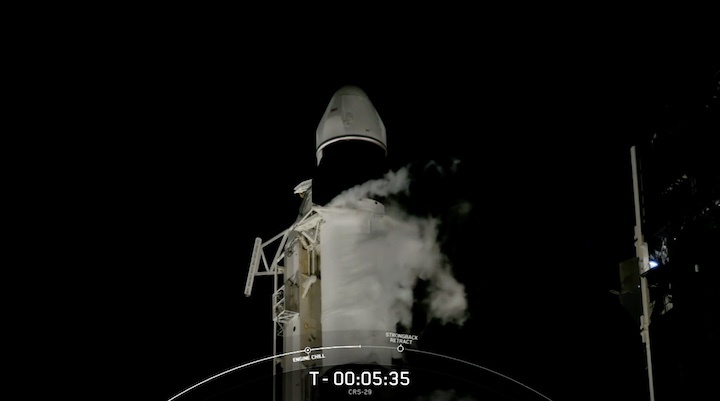
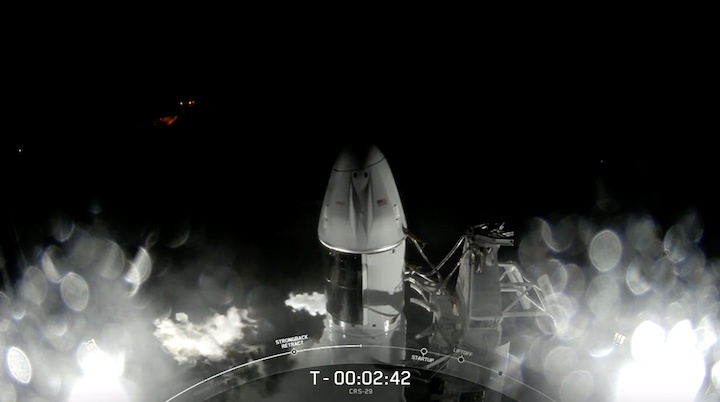
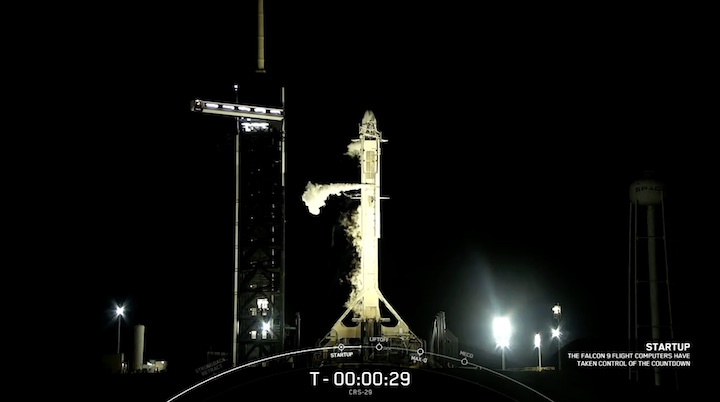
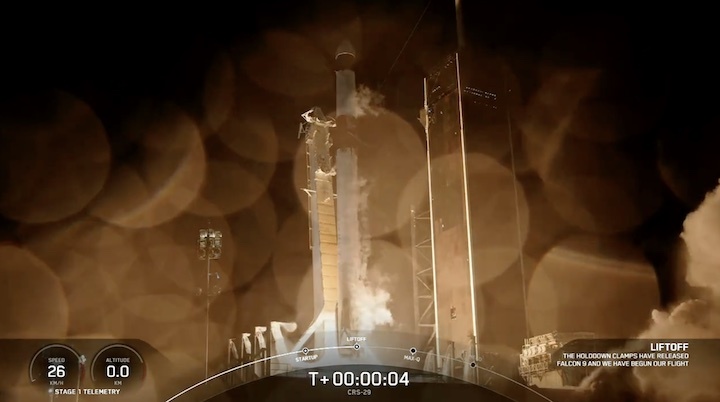
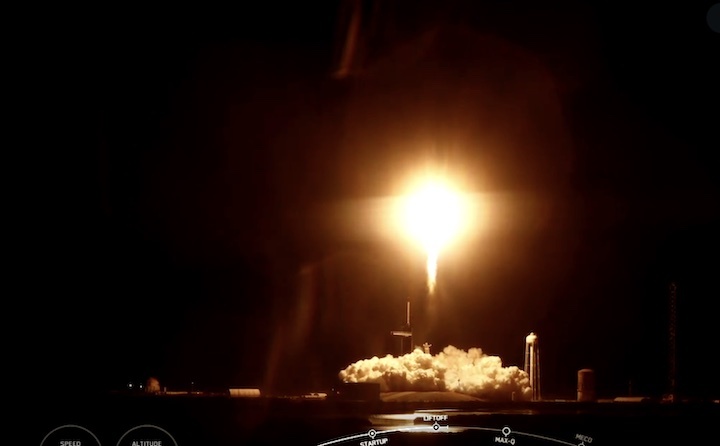
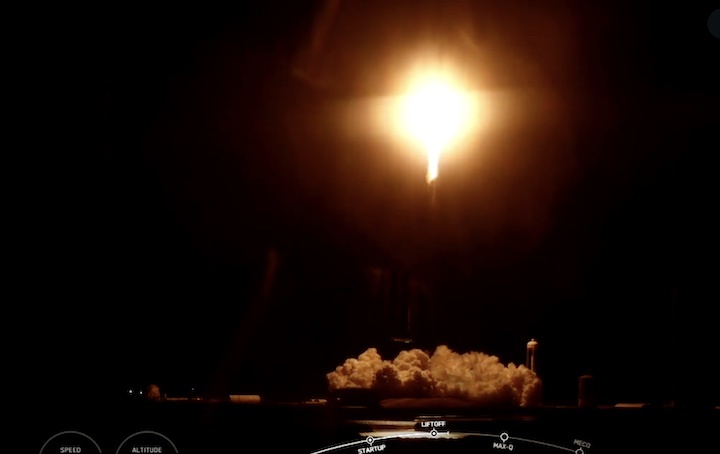
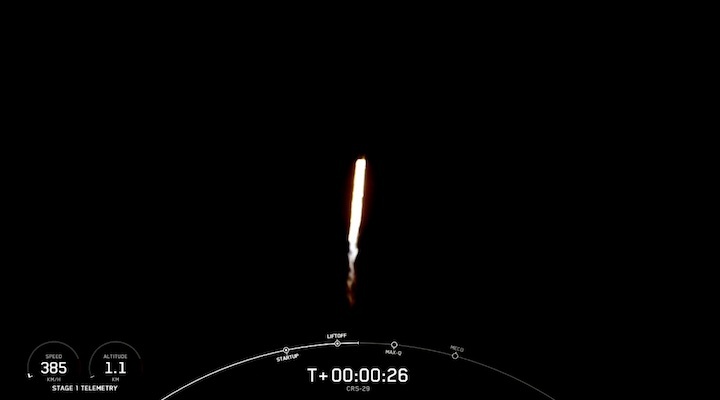
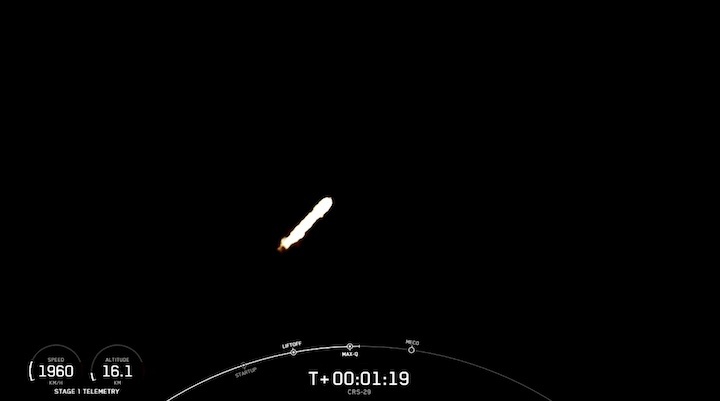
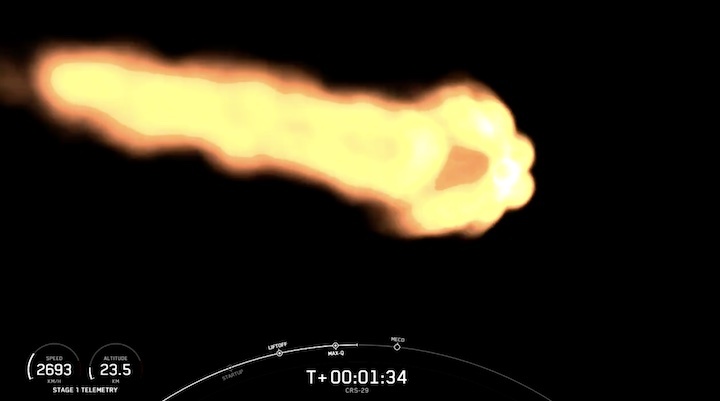
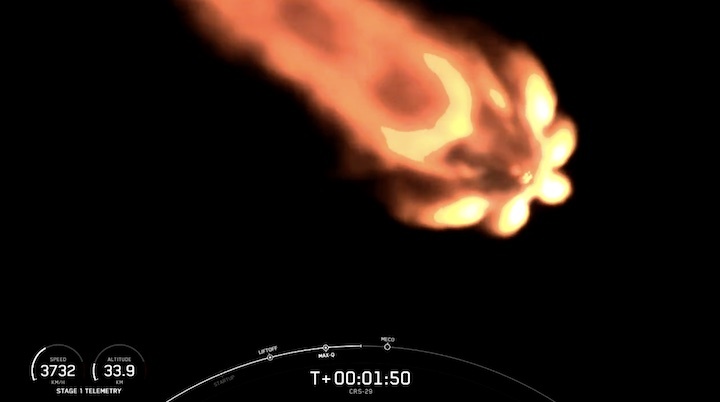
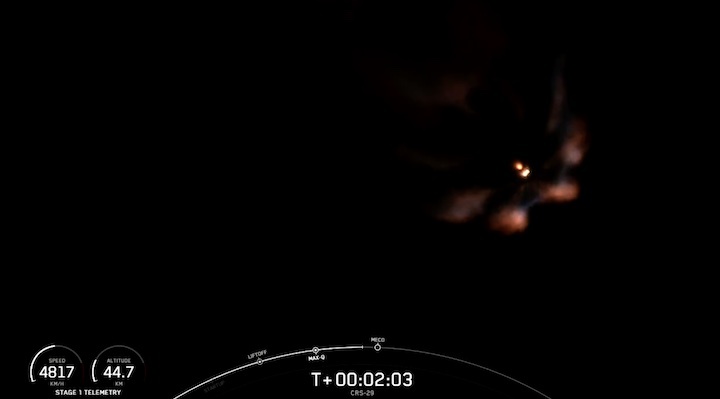
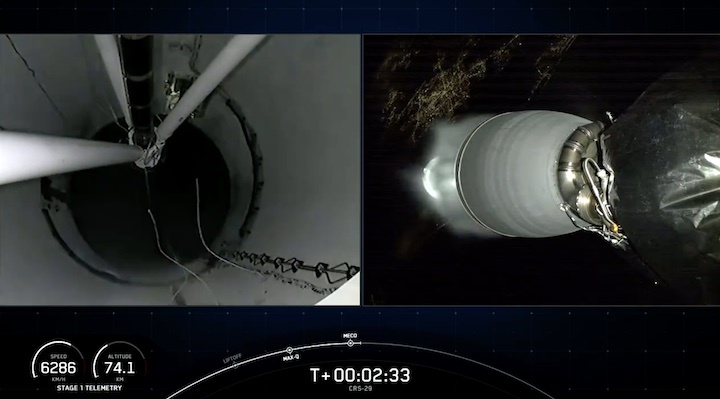
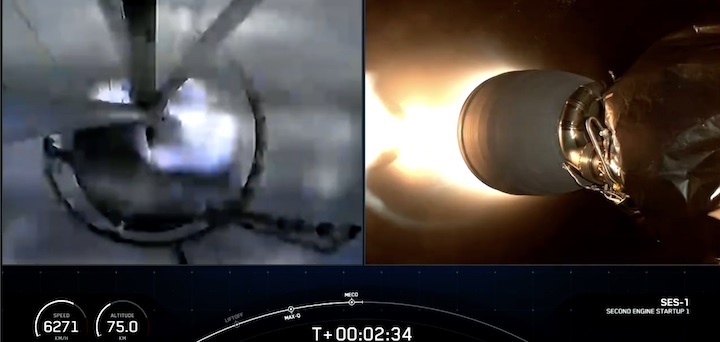
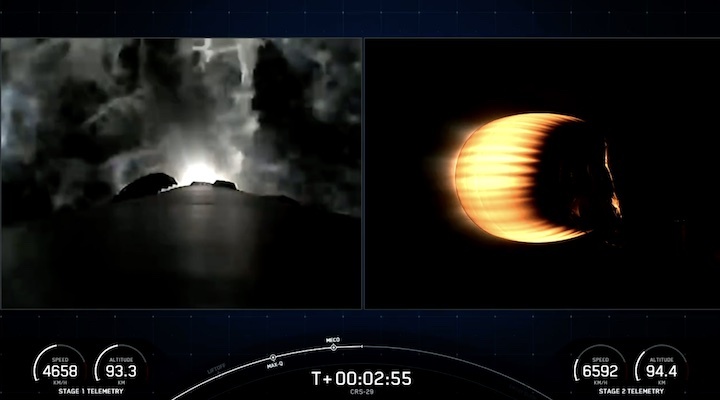
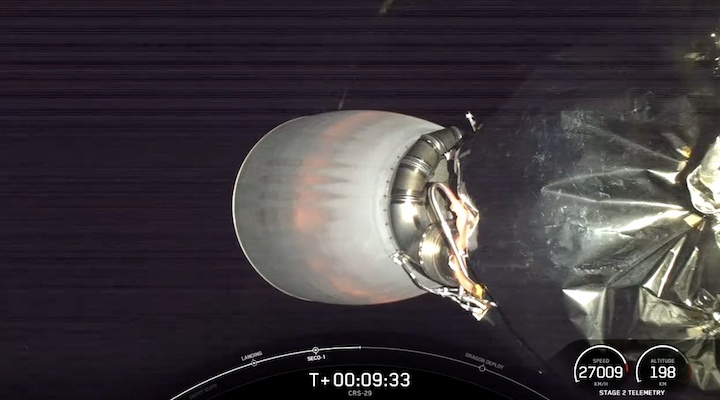
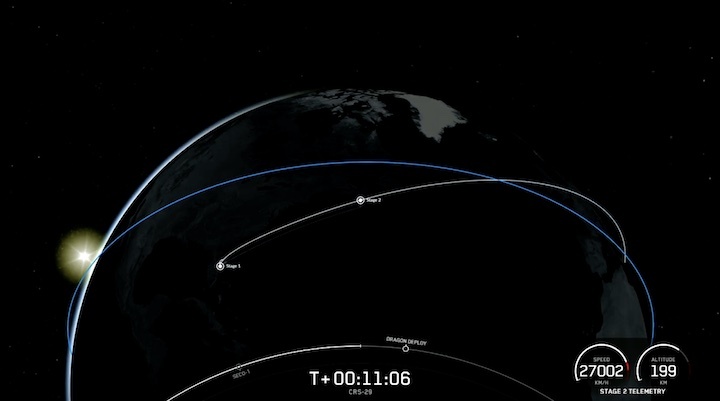
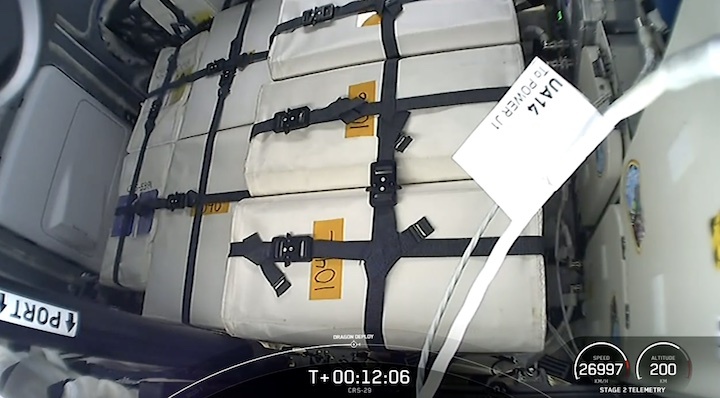
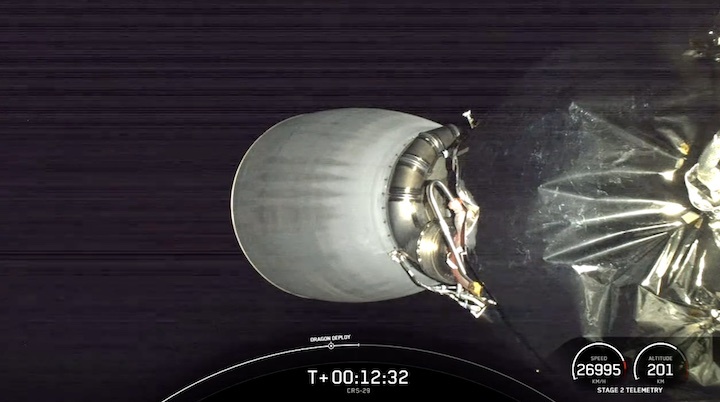
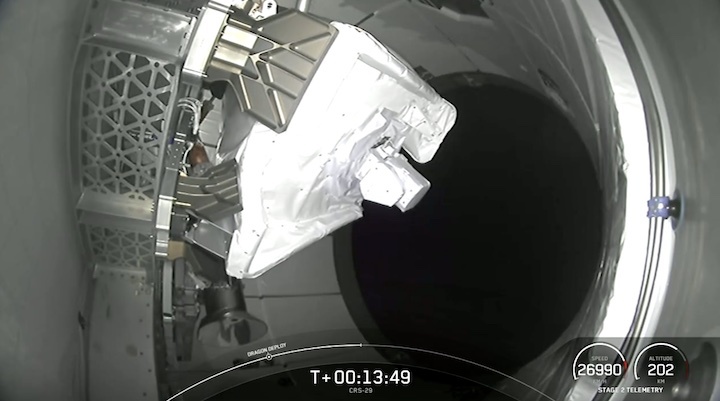
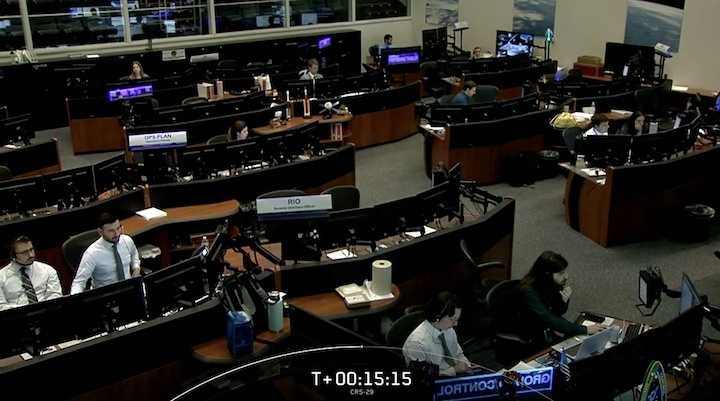
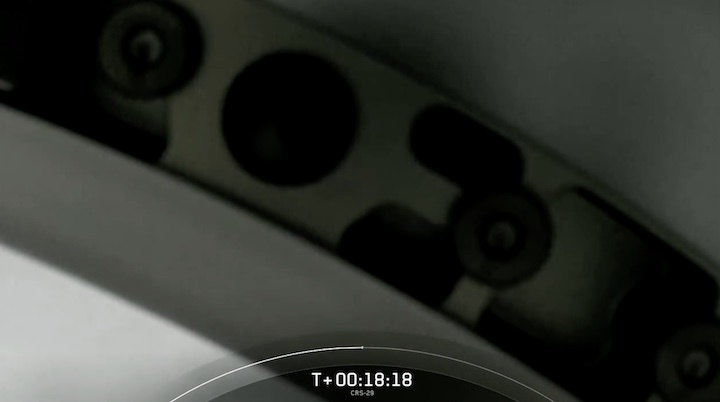
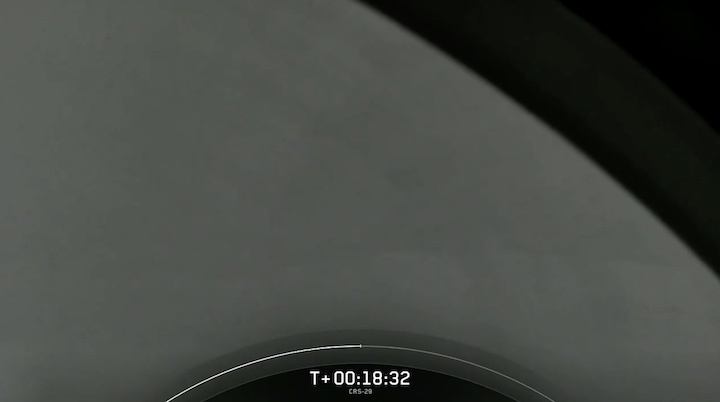
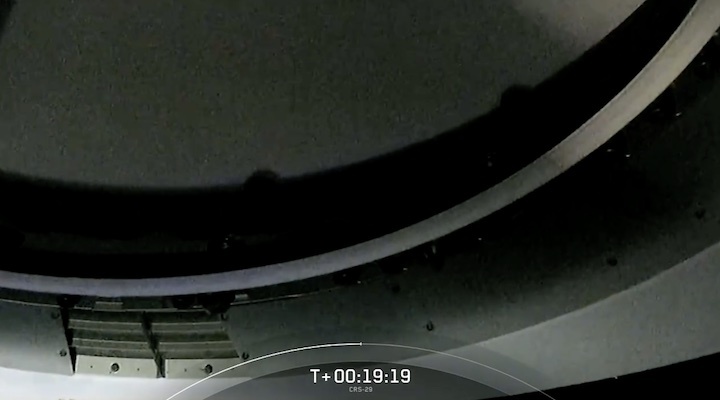
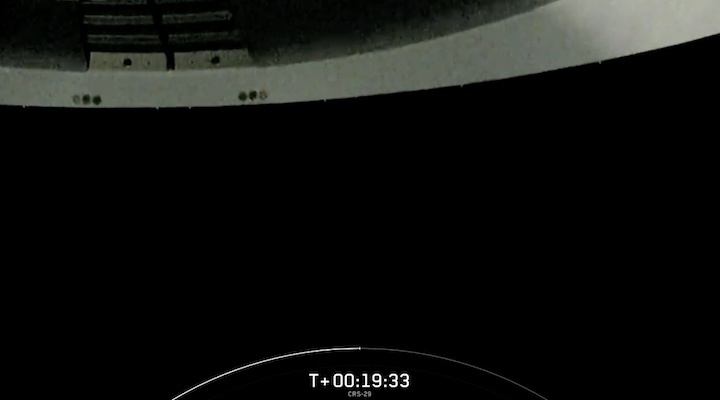
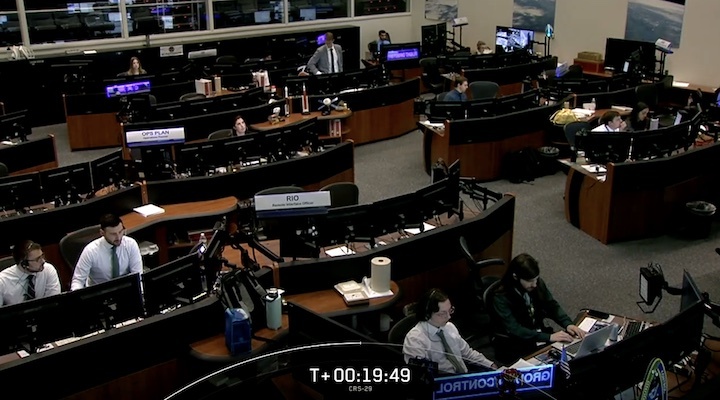
Quelle: SpaceX

